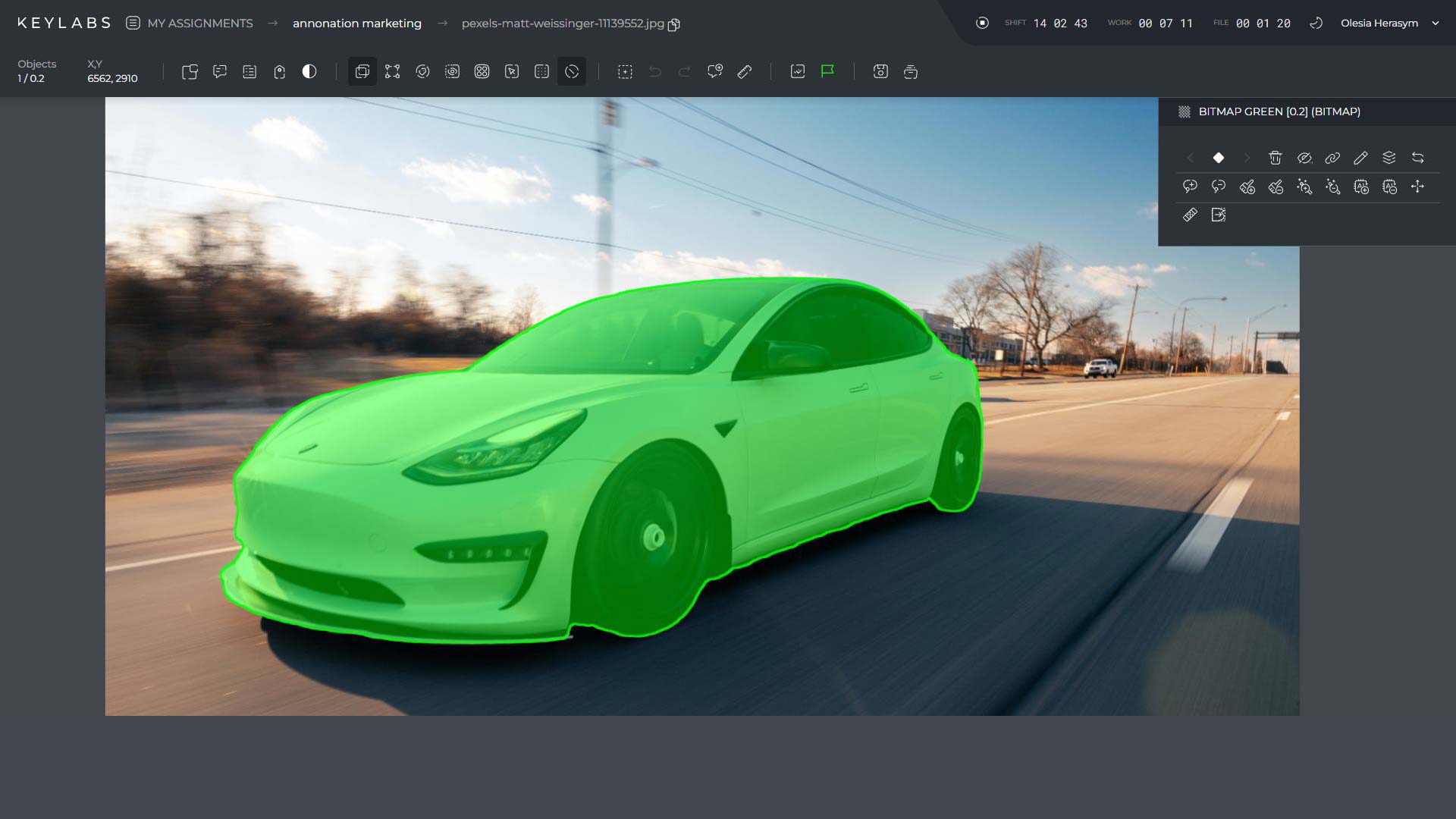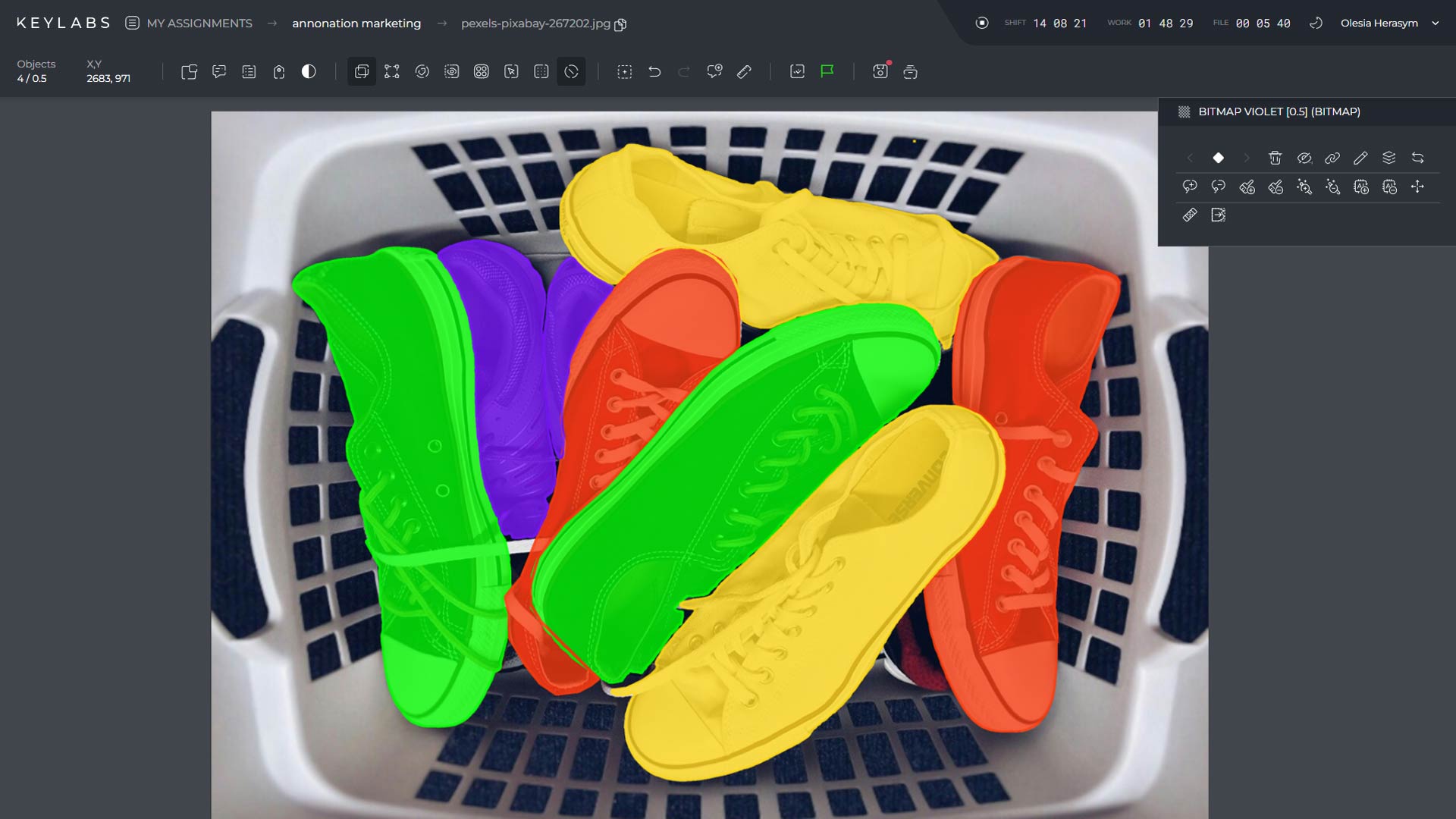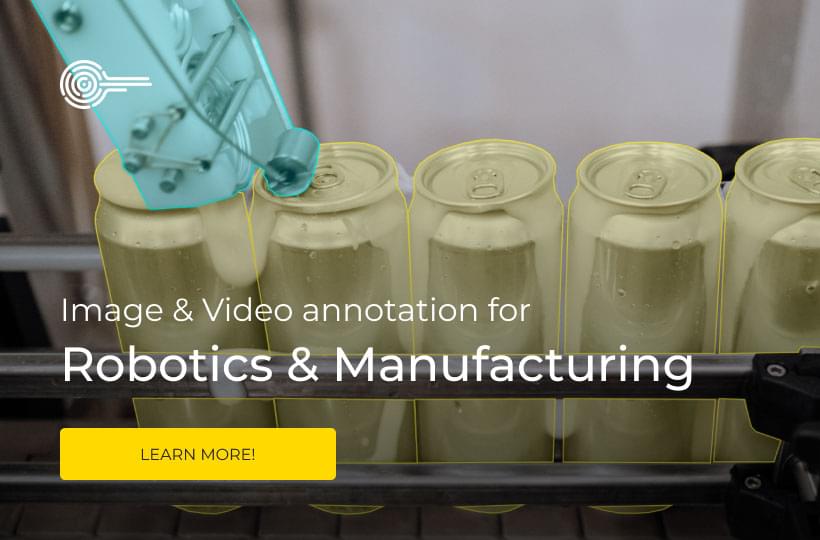Comparing Top Tools for Semantic Segmentation in 2024

With the rapid advancements in machine learning and artificial intelligence, the need for accurate image labeling has become paramount across various industries. Semantic segmentation, a computer vision technique that assigns specific labels to every pixel in an image, plays a crucial role in image annotation. To aid professionals in this process, we have undertaken a comprehensive comparison of the top tools for semantic segmentation in 2024, evaluating their performance, features, and reviews. By analyzing this information, we strive to assist you in making an informed decision on the best tool for your image segmentation needs.
Key Takeaways:
- Choosing the right semantic segmentation tool is essential for effective image labeling projects.
- Evaluating the performance, features, and user reviews can help in making an informed decision when selecting a semantic segmentation tool.
- An efficient user interface, support for various data formats and use cases, multiple annotation types, interpolation capabilities, QA/QC capabilities, data management features, integration with the machine learning pipeline, and excellent customer service are some of the key features of effective semantic segmentation tools.
- By using image annotation tools, businesses can significantly improve efficiency in the machine learning pipeline, reducing human errors and providing precise and trustworthy data.
- Considering factors such as the type of annotation tasks, level of accuracy required, scalability, and integration capabilities is crucial in selecting the right semantic segmentation tool.

Key Features of Effective Semantic Segmentation Tools
An effective semantic segmentation tool should have several key features that enhance its usability and contribute to the success of semantic segmentation projects. Here are the important features to consider when evaluating semantic segmentation tools:
Efficient User Interface
An efficient user interface allows users to navigate and utilize the tool easily. It should be intuitive, visually appealing, and provide a seamless experience for both beginners and experienced users.
Support for Various Data Formats and Use Cases
A versatile semantic segmentation tool supports different data formats like images, videos, and point clouds. It should also cater to various use cases such as object detection, instance segmentation, and scene understanding.
Multiple Annotation Types
Having the ability to annotate different object types and label classes is crucial for accurate semantic segmentation. Tools that offer a wide range of annotation options, including bounding boxes, polygons, and semantic masks, provide greater flexibility for annotators.
Interpolation Capabilities
Interpolation helps in reducing annotation effort by automatically generating annotations for similar objects based on existing annotations. This feature saves time and improves annotation consistency.
QA/QC Capabilities
Quality assurance and quality control features enable annotators to review and validate annotations for accuracy and consistency. These features are essential for maintaining high-quality datasets.
Data Management Features
Tools that provide robust data management capabilities help in organizing and storing large volumes of annotated data efficiently. This includes features like data versioning, data sharing, and data search functionality.
Integration with the Machine Learning Pipeline
Integrating the annotation tool with the machine learning pipeline streamlines the data labeling process and ensures seamless data flow. APIs and SDKs that enable easy integration are highly desirable.
Excellent Customer Service
A responsive and knowledgeable customer service team can provide prompt assistance and guidance when encountering issues or questions. This ensures a smooth experience and minimizes potential disruptions in annotation workflows.
Choosing a semantic segmentation tool with these important features will greatly enhance the efficiency and effectiveness of your image labeling projects, leading to accurate and reliable results.
In-Depth Review of Top Semantic Segmentation Tools
When it comes to semantic segmentation, choosing the right tool is paramount for achieving accurate and efficient results. In this section, we will provide an in-depth review of the top semantic segmentation tools in 2024. These tools have been carefully selected based on their performance, features, and user reviews.
Keylabs
Keylabs provides a comprehensive suite of annotation tools designed to simplify the semantic segmentation process. With advanced automation capabilities, Keylabs helps users save time while ensuring accurate annotations. It also offers powerful project management features, making it a popular choice among data labeling teams.

Labellerr
Labellerr is a powerful annotation tool known for its user-friendly interface and robust features. It offers an extensive range of annotation tools, advanced interpolation capabilities, and an intuitive project management system. Additionally, Labellerr provides excellent customer support to ensure a seamless experience for users.
Amazon SageMaker Ground Truth
Amazon SageMaker Ground Truth is a popular choice for semantic segmentation tasks. It offers a comprehensive set of annotation tools and integrates seamlessly with Amazon Web Services (AWS). With built-in active learning capabilities, SageMaker Ground Truth streamlines the annotation process and improves efficiency.
CVAT
CVAT (Computer Vision Annotation Tool) is an open-source annotation platform favored by many developers and researchers. It provides a wide range of annotation functionality, including polygon, rectangle, and semantic segmentation annotations. CVAT is highly customizable and offers integration options with other tools and frameworks.
Labelbox
Labelbox is a versatile platform that caters to various annotation needs, including semantic segmentation. It offers collaborative annotation tools, data management features, and powerful QA/QC capabilities. With its user-friendly interface and extensive integrations, Labelbox is a top choice for many data labeling professionals.
VGG Image Annotator (VIA)
VGG Image Annotator, also known as VIA, is an open-source annotation tool widely used for semantic segmentation tasks. With its simple and intuitive interface, VIA allows users to annotate images effortlessly. It supports various annotation types and plugins, making it highly adaptable to different project requirements.
Dataturks
Dataturks is a versatile annotation tool that offers comprehensive labeling features, including semantic segmentation. It supports a wide range of annotation formats and provides efficient collaboration and project management capabilities. Dataturks is widely appreciated for its ease of use and extensive customization options.
Hasty.ai
Hasty.ai is an advanced annotation software that combines human intelligence with automation to streamline the semantic segmentation process. With its powerful AI-assisted labeling capabilities, Hasty.ai enables users to annotate images quickly and accurately. It also offers project management and quality control features for efficient annotation workflows.
Roboflow
Roboflow is an annotation platform that simplifies the process of training computer vision models, including semantic segmentation models. It offers versatile annotation and data management features, making it easy to create and organize datasets. Roboflow also integrates with popular machine learning frameworks, enabling seamless integration into the ML pipeline.
SuperAnnotate
SuperAnnotate is a comprehensive annotation tool designed to enhance the efficiency of semantic segmentation tasks. It provides a wide range of annotation tools and automation features, ensuring accurate and consistent annotations. SuperAnnotate's intuitive interface and collaborative workflow make it a top choice for data labeling professionals.
Each of the semantic segmentation tools mentioned above offers unique features and capabilities that cater to different needs and requirements. It's essential to evaluate these tools based on their annotation software, AI data management and curation, integration and security features, MLOps and automation capabilities, and project and quality management functionalities. By selecting the right tool, you can optimize your semantic segmentation workflows and achieve accurate results.
Keep reading to discover how image annotation tools can significantly improve efficiency in the machine learning pipeline.
How Image Annotation Tools Improve Efficiency
Image annotation tools play a pivotal role in enhancing the efficiency of the machine learning pipeline. By automating the annotation process, these tools save valuable resources and time, resulting in increased productivity and improved project turnaround. Let's take a closer look at the benefits and advantages of using image annotation tools.
1. Automation and Accuracy
Image annotation tools automate the process of labeling images, reducing the need for manual annotation. This significantly decreases the chances of human errors, ensuring precise and accurate annotations. By leveraging advanced algorithms, these tools can accurately identify and label objects, segments, or regions within an image.
2. Cost Savings
Employing human annotators for image labeling can be expensive. Image annotation tools help reduce the cost of human labor by automating the majority of the annotation process. This economical alternative allows businesses to allocate their resources more efficiently and invest in other areas of the machine learning pipeline.
3. Precise and Trustworthy Data
Image annotation tools provide reliable and consistent annotations, ensuring the quality and integrity of the labeled data. The accuracy and precision of these annotations enable machine learning models to learn from high-quality data, enhancing their performance and overall accuracy.
4. Assist in Decision Making
Accurate and reliable annotations produced by image annotation tools aid in decision-making for businesses. These annotations provide valuable insights and information that can guide strategic choices and drive better outcomes. By leveraging these annotations, businesses can make informed decisions with confidence.
Conclusion
In conclusion, selecting the right semantic segmentation tool is crucial for the success of your image labeling projects. After conducting a comprehensive comparison of the top semantic segmentation tools, we have identified the best options available in the market. These tools offer a range of features and functionalities that cater to different needs and requirements, enabling you to achieve efficient and accurate semantic segmentation results.
When choosing a semantic segmentation tool, it is essential to consider various factors. The type of annotation tasks you need to perform, the level of accuracy required, scalability, and the tool's integration capabilities with your machine learning pipeline are critical considerations. By carefully evaluating these factors, you can make an informed decision and ensure the tool aligns with your project goals.
The semantic segmentation tools reviewed in this article excel in different areas, allowing you to find the perfect fit for your specific requirements. Some tools may offer advanced AI data management and curation features, while others prioritize seamless integration with existing workflows. By carefully analyzing the strengths and weaknesses of each tool, you can select the one that best suits your needs.
By selecting the most suitable semantic segmentation tool for your projects, you can enhance the efficiency and accuracy of your image labeling tasks, ultimately improving the performance of your machine learning models. The best semantic segmentation tools are equipped with advanced capabilities to streamline the annotation process, ensure data quality, and simplify the integration within the ML pipeline.
Make sure to explore the features, customer reviews, and additional resources provided by each tool for further information. With the right semantic segmentation tool at your disposal, you can unlock the potential of your image labeling projects and achieve remarkable results in the field of computer vision.
Frequently Asked Questions about Semantic Segmentation Tools
Unfortunately, we do not have any frequently asked questions about semantic segmentation tools in the factual data provided. However, we understand that you may have questions about these tools. Here are some common questions you may have:
What is semantic segmentation?
Semantic segmentation is a computer vision task that involves labeling each pixel in an image with a corresponding class or category. It is used to understand the context and boundaries between different objects or regions within an image.
What are semantic segmentation tools used for?
Semantic segmentation tools are used for various applications, including object recognition, autonomous driving, medical imaging, augmented reality, and video analytics. They provide a way to annotate and label images accurately, which is essential for training machine learning models.
How do semantic segmentation tools work?
Semantic segmentation tools use advanced algorithms and deep learning models to analyze and classify each pixel in an image. These models are trained on large datasets and can accurately segment objects or regions based on their visual features and semantic context.
What are some popular semantic segmentation tools?
There are several popular semantic segmentation tools available in the market, including Keylabs, Labellerr, Amazon SageMaker Ground Truth, CVAT, Labelbox, VGG Image Annotator (VIA), Dataturks, Hasty.ai, Roboflow, and SuperAnnotate. Each tool has its own unique features and capabilities.
Can semantic segmentation tools be integrated with other machine learning pipelines?
Yes, most semantic segmentation tools provide integrations with popular machine learning frameworks and platforms such as TensorFlow, PyTorch, and Azure Machine Learning. This allows users to seamlessly incorporate the annotated data into their machine learning workflows.
By leveraging these additional resources, you can further enhance your knowledge and skills in semantic segmentation, enabling you to make more informed decisions and achieve optimal results in your image annotation projects.
FAQ
What are the key features of effective semantic segmentation tools?
Effective semantic segmentation tools should have features such as an efficient user interface, support for various data formats and use cases, multiple annotation types, interpolation capabilities, QA/QC capabilities, data management features, integration with the machine learning pipeline, and excellent customer service.
How can image annotation tools improve efficiency?
Image annotation tools improve efficiency by automating the annotation process, reducing human errors, lowering the cost of human labor, and providing precise and trustworthy data. They also assist in decision-making by offering accurate and reliable annotations, ultimately leading to better model performance and accuracy.
Which are the top semantic segmentation tools in 2024?
The top semantic segmentation tools in 2024 include Keylabs, Labellerr, Amazon SageMaker Ground Truth, CVAT, Labelbox, VGG Image Annotator (VIA), Dataturks, Hasty.ai, Roboflow, and SuperAnnotate.
Where can I find additional resources and information on semantic segmentation tools?
We recommend visiting the websites of the tools mentioned in this article for additional resources and information. You can also explore online communities and forums dedicated to computer vision and machine learning to learn from the experiences and insights of others in the field.
What should I consider when choosing a semantic segmentation tool?
When choosing a semantic segmentation tool, it's important to consider factors such as the type of annotation tasks, the level of accuracy required, scalability, and integration with your machine learning pipeline. Evaluating the features and functionalities of the tool in relation to your specific needs and requirements is essential for making an informed decision.




